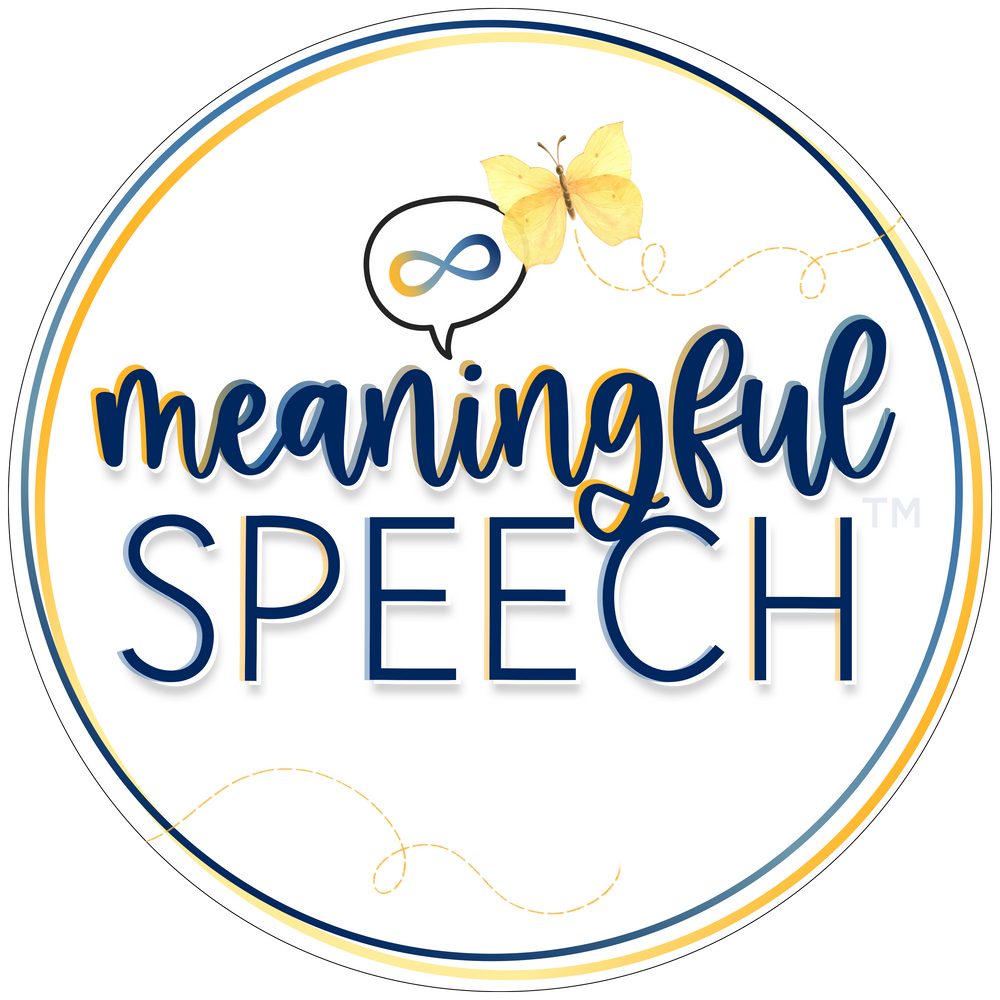Could my non-speaking or minimally speaking child be a gestalt language processor?
Nov 23, 2022
Short answer: Absolutely! There are a number of signs that you can look for to help you identify your non-speaking or minimally speaking child or client as a gestalt language processor and ways you can start supporting their language development today.
P.S. We don’t use the terms pre-verbal and non-verbal, BUT your child may have been labeled with these terms instead of minimally speaking or non-speaking. Everyone is verbal! In this blog post we are talking about how much or how little someone uses mouth speech/mouth words.
Gestalt language development signs to look for in your non-speaking or minimally speaking children
- The child can sing songs but doesn't have any "words." Gestalt language processors are often very musical. They pick up on intonation first so song melodies can naturally become first gestalts!
- The minimal amount of speech the child has is single words that have been taught and "jargon." Children in Stage 1 of gestalt language development may communicate using a mix of unintelligible strings of language and many single words. These single words are “stuck”, meaning they are unable to combine these single words with other words to expand their utterances.
- The child is not easily understood but their "sounds" or "jargon" have rich intonation if you listen closely. Many gestalt language processors are trying to communicate long strings of language which can be difficult for young children and/or children have not yet developed the muscle coordination required for these long strings of language.
- If using AAC the child is not making progress despite intensive modeling of a robust system with authentic exchanges. Unfortunately, AAC systems are not yet developed with gestalt language processors in mind. Although, there are ways you can customize current systems to grow with gestalt language processors through the stages.
- The child studies and replays media clips (videos, songs, TV shows, movies). For example, they may replay the theme song or intro of a TV show repeatedly instead of watching the show. They may be more drawn to the melody and intonation of this part of the video and not as interested in watching the show.
What to do if you suspect your non-speaking or minimally speaking child is a gestalt language processor
- Acknowledge anything that is said (even if it just sounds like “sounds” or jargon) with a smile, head nod, saying “yeah” or “okay”, or repeating it back to them.
Example:
Child: produces what sounds like jargon: “Wachgado”
Adult: *nods and repeats the sounds back to the child* “Wachgado!” - Do the detective work! Try and investigate what their unintelligible utterances mean by looking into what they’re watching, listening to, and what other people are saying to them.
Example: A child loves Bluey and they watch specific parts of a few episodes repeatedly. Their parents watch these parts of the episodes and listen to see if anything matches the intonation of an unintelligible string of language the child is communicating frequently. - Get them started with a robust AAC system if they don’t already have one. There are no prerequisites to trying AAC and trying it does not inhibit spoken language. Research shows it actually encourages it!
- Begin modeling new gestalts/scripts with them both verbally and with AAC. Instead of changing the inherent set up of the device, consider adding gestalts the child is currently using and you’re currently modeling to pages with contextual relevance or motor planning considerations consistent with the language organization. Use these to model these scripts both verbally and with AAC.
- Steps are the same for any Stage 1 gestalt language processor whether they’re intelligible or not. All children in the beginning stages of gestalt language development need more gestalts! They need these naturally modeled in their play and everyday life.
Want to learn more in-depth information about how to support non-speaking or minimally speaking gestalt language processors?
-
There are many free podcasts, webinars and articles to get you started. A comprehensive list of resources can also be found on our website.
-
Consider taking the Meaningful Speech course to learn more about how your child or client processes language and how you can help move them from echolalia to self-generated (original flexible) language.
-
Consider joining the waitlist for our new AAC + Gestalt Language Processing course that will be released in February of 2023! It will teach you how to identify, evaluate and support gestalt language processors who use AAC.
-
Look for a speech-language pathologist (SLP) who "gets it" and can help you in supporting your child's language development. Check out our registry. for SLPs who understand gestalt language processing and child-led therapy.
